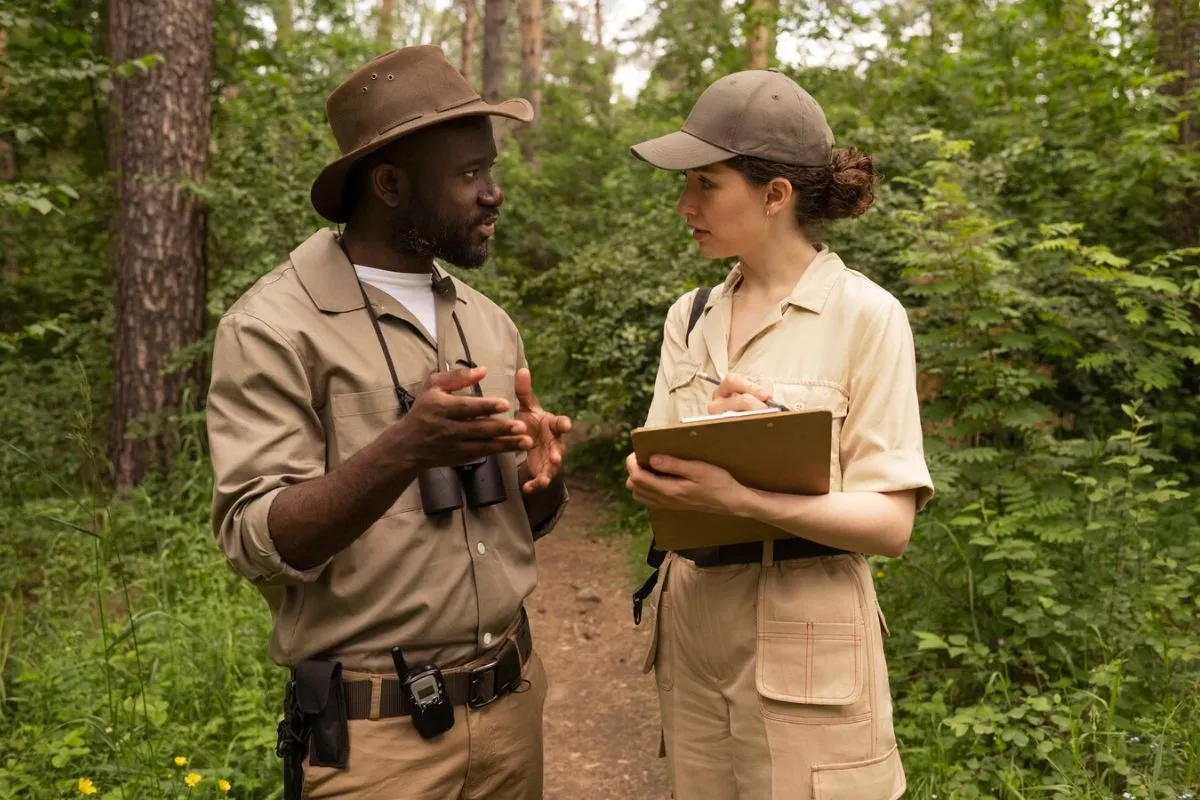Using Game Theory to Improve Wildlife Poaching Prevention offers innovative methods. These strategies leverage predictive models.
This allows conservationists to anticipate poaching threats. Effective decision-making becomes possible.
Understanding game theory applications in this context is crucial. It brings a new dimension to wildlife conservation efforts.
Understanding Game Theory in Wildlife Conservation
What is Game Theory?
Game Theory analyzes competitive situations. It assesses decision-making among interdependent players.
In wildlife conservation, it predicts human and animal interactions. Poaching scenarios are treated as strategic games.
By doing so, conservationists can develop preemptive strategies. These strategies enhance wildlife protection.
Application in Poaching Prevention
Game Theory applications in poaching focuses on behavior prediction. Predictive models simulate poacher and ranger actions.
Strategic decisions are derived from these models. This goes beyond traditional reactive measures.
Instead, conservationists adopt proactive approaches. This improves the effectiveness of anti-poaching initiatives.
Developing Effective Strategies
Strategies start with identifying key variables. These include poaching hotspots and ranger deployment factors. Understanding terrain and accessibility also plays a critical role in strategy formulation.
Using predictive models, potential poacher moves are charted. Conservationists can then optimize ranger patrol routes. Integrating real-time data from surveillance technologies further enhances model accuracy.
This targeted approach reallocates resources efficiently. It dramatically improves wildlife protection and conservation outcomes. Additionally, it enables rapid response to emerging threats, increasing the chances of preventing illegal activities.
Impact and Benefits of Game Theory in Conservation
Enhanced Decision Making
Game Theory enhances decision-making capabilities. Conservationists can make informed decisions promptly.
This results in better resource allocation. It minimizes wastage and maximizes efficiency in protection efforts.
Additionally, game theory’s predictive nature enables quick adaptation. This keeps conservation strategies agile and effective.
Cost Efficiency
Optimizing ranger patrol routes through Game Theory reduces costs. Resources are concentrated where they’re most needed.
This leads to significant savings for conservation programs. More funds are available for other critical areas.
Ultimately, Game Theory boosts operational sustainability. Conservation efforts become more focused and financially viable.
Increased Poaching Deterrence
Deploying Game Theory predicts and thwarts poaching attempts. By anticipating poacher strategies, conservationists can allocate resources more effectively. Poachers face greater uncertainty and higher risks, deterring them from illegal activities.
This deterrent effect results in lower poaching rates. The presence of strategic patrols makes it more difficult for poachers to operate undetected. Consequently, more wildlife remains protected and populations thrive, ensuring the stability of the ecosystem.
Over time, poacher behavior shifts due to increased risks. They become less likely to target well-guarded areas, reducing the pressure on heavily monitored zones. This behavioral change helps distribute conservation efforts more evenly, maximizing overall protection.
Case Studies and Practical Examples
Case Study: Predictive Patrol Routing
In South Africa, Game Theory informed patrol routing strategies. By analyzing potential poaching hotspots, rangers were deployed based on predictive models. This allowed for a more efficient allocation of resources and increased patrol coverage in vulnerable areas.
This led to a 30% decrease in poaching incidents. The strategic deployment of rangers not only deterred poachers but also created a perception of constant monitoring. As a result, wildlife populations in key areas showed significant recovery, with some species numbers increasing for the first time in years.
It underscored the value of predictive patrols. The success of these strategies highlighted the importance of integrating technology and game theory into conservation efforts. This approach is now being adopted in other regions, offering hope for the protection of endangered species worldwide.
Case Study: Community Engagement
In Kenya, game theory was applied to involve local communities. Incentives were created for reporting poaching activities.
This cooperative strategy positioned communities as key stakeholders. It led to a 40% reduction in poaching.
The community’s role became pivotal in overall conservation efforts. Engagement strategies continue to evolve.
Successful Implementation Challenges
While Game Theory offers many benefits, challenges exist. Accurate data collection is essential yet difficult.
Technological limitations can impede model accuracy. Continuous updates and refinements are vital for success.
Moreover, balancing predictive models with on-ground realities is challenging. Adaptive management is necessary to navigate complexities.
Future of Game Theory in Wildlife Conservation
Technological Advancements
AI and machine learning enhance predictive accuracy. These technologies refine Game Theory models continuously.
Improved data collection through IoT devices also supports this. Innovative tools provide richer datasets for analysis.
Overall, technology drives the future of Game Theory. Conservationists will have more powerful tools at their disposal.
Policy and International Cooperation
Global cooperation boosts Game Theory applications. By pooling shared data and resources, the reliability and accuracy of predictive models are significantly enhanced. This collaborative approach allows for more comprehensive monitoring and analysis of poaching activities across different regions.
Policy frameworks must support these initiatives. Governments and organizations need to establish policies that facilitate data sharing and joint operations. Collaborative enforcement increases overall success rates by ensuring that efforts are coordinated and effective.
Countries must align efforts for maximal impact. Unified action not only strengthens wildlife conservation efforts globally but also helps in the standardization of methods and technologies used. This collective strategy creates a formidable front against poaching, ensuring that endangered species are protected across borders.
Expanding Beyond Poaching
Game Theory has potential beyond poaching. Habitat management and species migration strategies can benefit.
New applications will surface as research progresses. Conservation strategies will become more comprehensive.
Game Theory will spearhead future conservation innovations. Its versatility will drive more holistic protection efforts.
A Path Forward: Commitment to Wildlife Conservation
Using Game Theory to Improve Wildlife Poaching Prevention shows immense promise. It advances strategic and effective conservation.
Conservationists must embrace these innovative methods. Continued research and cooperation are essential.
Let’s commit to protecting our wildlife. Adopting game theory methodologies enhances global conservation efforts.
Frequently Asked Questions
What is Game Theory?
Game Theory is a branch of mathematics that models and analyzes competitive scenarios.
How does Game Theory help in poaching prevention?
It predicts poacher behaviors, aiding strategic ranger deployment.
What technologies support Game Theory applications?
AI, IoT devices, and machine learning enhance data collection and model accuracy.
What are the challenges of implementing Game Theory?
Data collection, technological limitations, and adapting models to real-world scenarios are key challenges.
How does community involvement impact poaching prevention?
Community engagement creates incentives and reduces poaching rates significantly.




